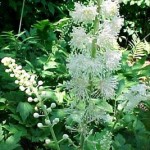DNA Barcoding Exposes Deregulation of Herbal Supplements
 There is an increasing need for more Americans to improve their health and lifestyle. One growing trend that I see in my hometown of New York City is the building of local farms on rooftops and the increase of organic produce sections in the supermarkets. In an effort to protect our health some of us are choosing more natural and locally grown food over mass-produced, insecticide-ridden crops. And in the realm of medicine, many people are choosing more natural medicines or herbal supplements to support our health. Many common herbal medicines used today are used for a variety of reasons, from lowering cholesterol to preventing colds.
There is an increasing need for more Americans to improve their health and lifestyle. One growing trend that I see in my hometown of New York City is the building of local farms on rooftops and the increase of organic produce sections in the supermarkets. In an effort to protect our health some of us are choosing more natural and locally grown food over mass-produced, insecticide-ridden crops. And in the realm of medicine, many people are choosing more natural medicines or herbal supplements to support our health. Many common herbal medicines used today are used for a variety of reasons, from lowering cholesterol to preventing colds.
Despite the fact that the foods we eat and the medicines we take can indeed be “natural”, there are still some inherent dangers in some of them. Similar to prescription medications, some herbal supplements can cause serious side effects such as liver and lung damage, or can interfere with other medications taken at the same time. What makes herbal supplements perhaps more dangerous is the fact that they are not as highly regulated as prescription drugs. Manufacturers of herbal supplements do not need approval from the FDA in order to be put on the market. This begs the question of whether herbal supplements either have extra ingredients or are missing vital ingredients that affect their efficacy and safety.
This lack of regulation peaked the curiosity of young scientists at Hostos-Lincoln Academy in Bronx, NY. A group of high school students participated in the Urban Barcode Project (www.urbanbarcodeproject.org) and investigated gingko products sold in a variety of pharmacies and tried to identify what species of plants were primarily found in both dried leaf, liquid, and pill forms. The students found an interesting result using DNA barcoding; many of the packaged products contain mostly rice product and very little gingko. Many leaf products contained primarily Atropa belladonna, Thymus vulgaris, Salvia pratensis, and different species from the genus Nicotiana, which may be potentially harmful.
Scientists at the New York Botanical Garden (NYBG) have been working on similar projects. Damon Little, a bioinformaticist at the NYBG, investigated black cohosh, a menopause herbal supplement that has been known to be inconsistently effective in test trials. He thought these mixed results were due to the varied production of black cohosh pills. Perhaps some of these pills lack the vital ingredient for relieving menopausal symptoms, the actual black cohosh itself.
Little used DNA barcoding to identify the main species found in a variety of black cohosh pills. He discovered that as many as one quarter of the tested pills contained no black cohosh at all, but instead a related species. This can be a particularly serious problem; not only can a different species decrease the supplement’s effectiveness, but it can be potentially toxic to humans.
Unfortunately, these findings do not prove that the variety of black cohosh pills affect the variety of outcomes for users. The pills that were barcoded were purchased in New York City and online, but they were not the pills used in clinical trials. The next step would be to see if people who take pills without black cohosh are affected differently compared to those who take pills with black cohosh. It would be interesting to see if there is such a strong correlation. Perhaps with more convincing evidence, we can push for more regulation of herbal supplement production.
For more information go to:
Herbal Menopause Supplement Often Contains Other Species, DNA Barcoding Reveals
DNA Barcode Identification of Black Cohosh Herbal Dietary Supplements
Herbal supplements: What to know before you buy
| Print article | This entry was posted by Melissa Lee on October 12, 2012 at 4:54 pm, and is filed under DNA Barcoding. Follow any responses to this post through RSS 2.0. You can leave a response or trackback from your own site. |
